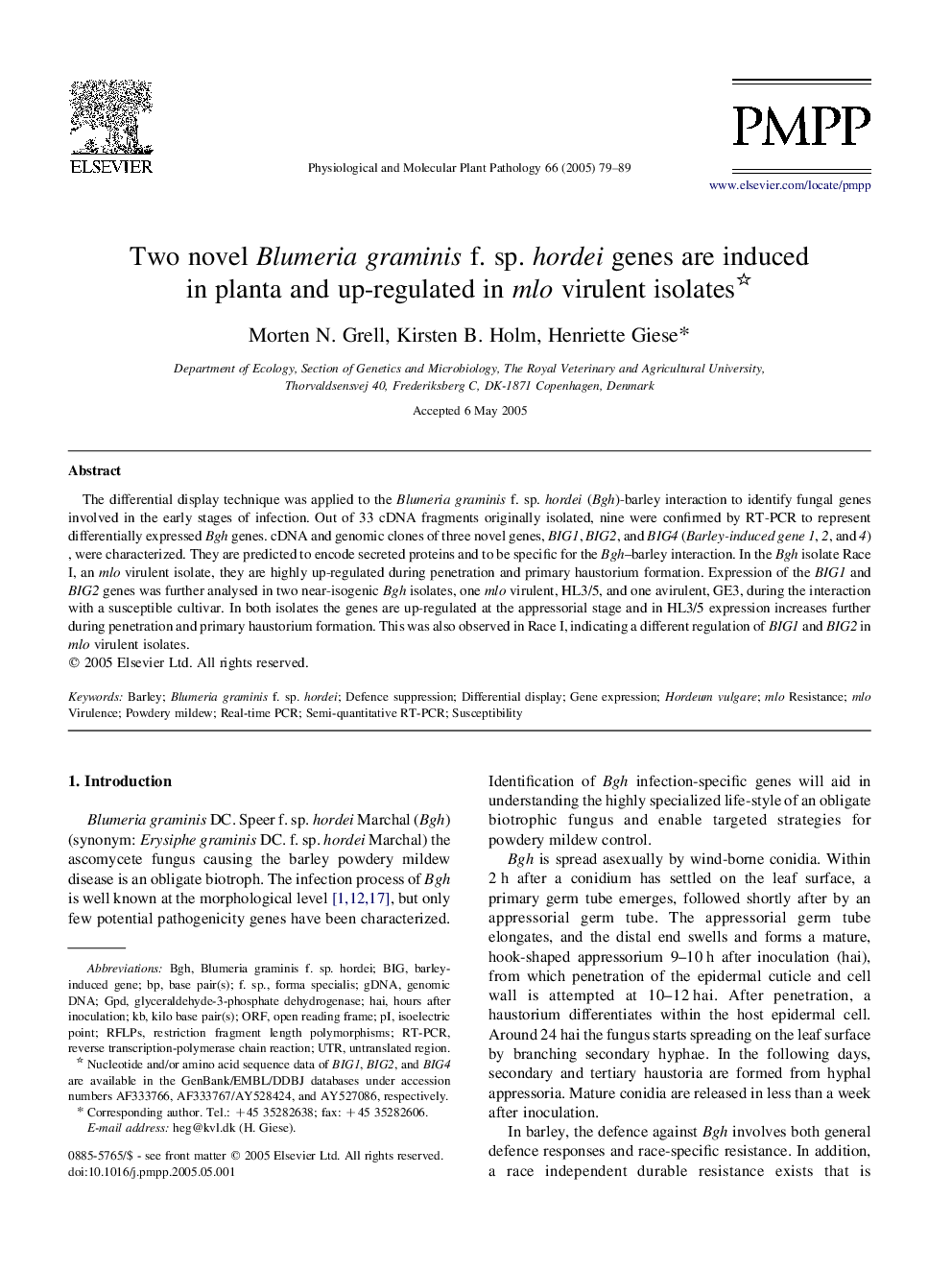| Article ID | Journal | Published Year | Pages | File Type |
|---|---|---|---|---|
| 9144667 | Physiological and Molecular Plant Pathology | 2005 | 11 Pages |
Abstract
The differential display technique was applied to the Blumeria graminis f. sp. hordei (Bgh)-barley interaction to identify fungal genes involved in the early stages of infection. Out of 33 cDNA fragments originally isolated, nine were confirmed by RT-PCR to represent differentially expressed Bgh genes. cDNA and genomic clones of three novel genes, BIG1, BIG2, and BIG4 (Barley-induced gene 1, 2, and 4), were characterized. They are predicted to encode secreted proteins and to be specific for the Bgh-barley interaction. In the Bgh isolate Race I, an mlo virulent isolate, they are highly up-regulated during penetration and primary haustorium formation. Expression of the BIG1 and BIG2 genes was further analysed in two near-isogenic Bgh isolates, one mlo virulent, HL3/5, and one avirulent, GE3, during the interaction with a susceptible cultivar. In both isolates the genes are up-regulated at the appressorial stage and in HL3/5 expression increases further during penetration and primary haustorium formation. This was also observed in Race I, indicating a different regulation of BIG1 and BIG2 in mlo virulent isolates.
Keywords
GPDkilo base pair(s)UTRBlumeria graminis f. sp. hordeiRFLPsBGHHAIRT-PCRgDNAORFgenomic DNAReal-time PCRsemi-quantitative RT-PCRBIGGene expressionBase pair(s)BarleySusceptibilityHordeum vulgarehours after inoculationDifferential displayopen reading frameuntranslated regionIsoelectric pointreverse transcription-polymerase chain reactionrestriction fragment length polymorphismsPowdery mildewglyceraldehyde-3-phosphate dehydrogenase
Related Topics
Life Sciences
Agricultural and Biological Sciences
Plant Science
Authors
Morten N. Grell, Kirsten B. Holm, Henriette Giese,
